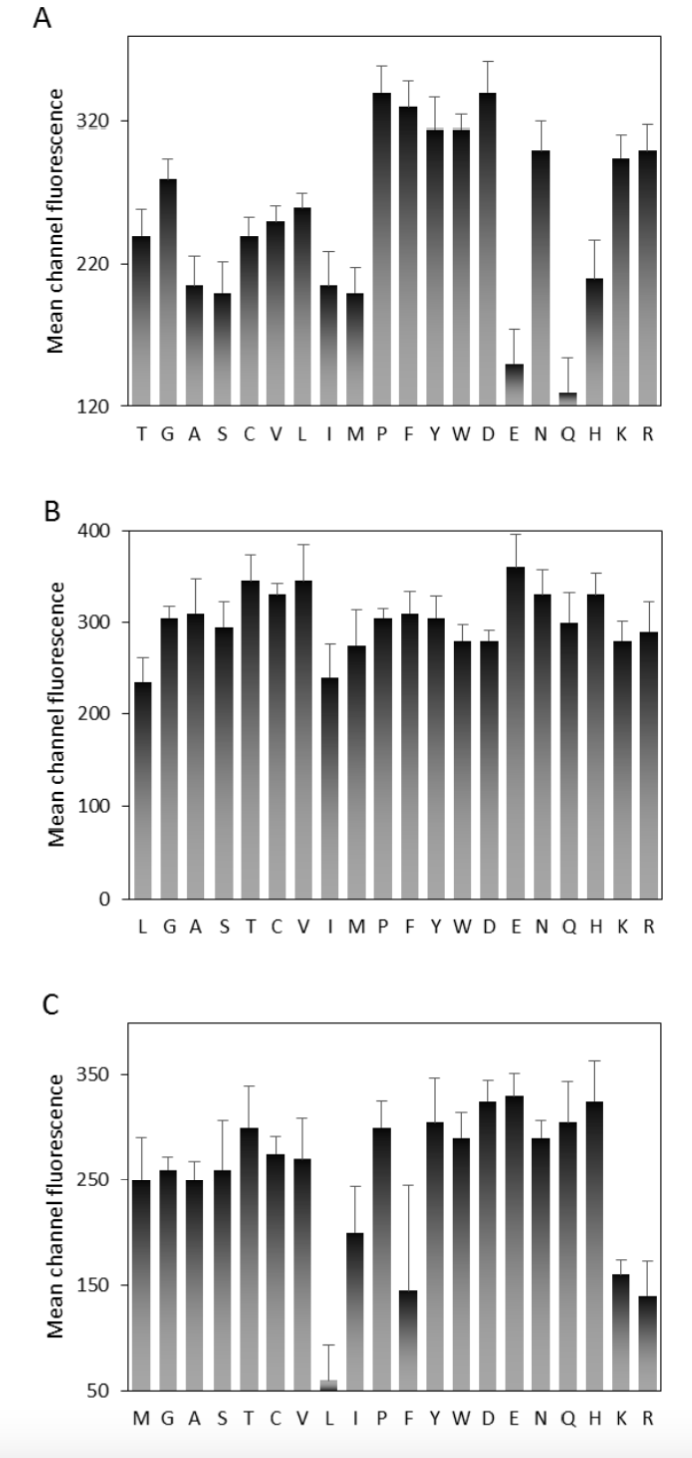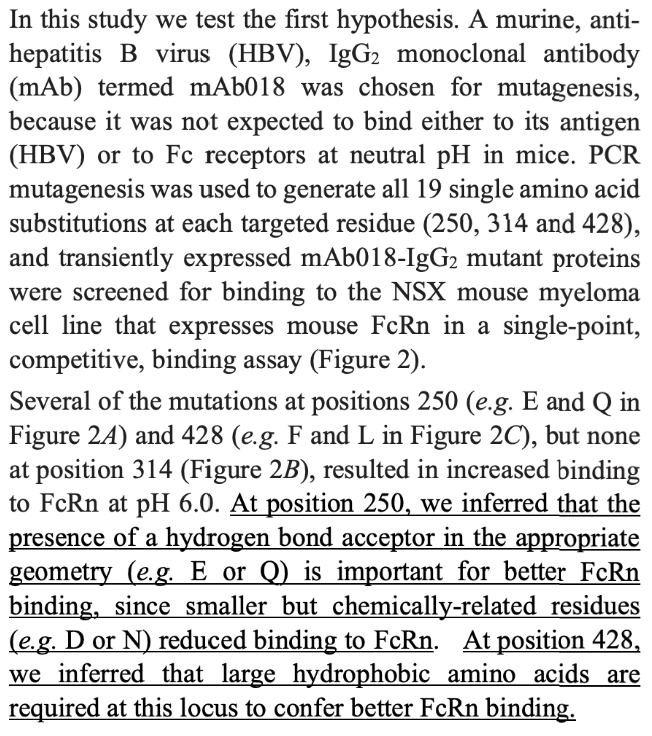Answered step by step
Verified Expert Solution
Question
1 Approved Answer
PLEASE DO NOT JUST COPY AND PASTE A PORTION OF THE RESEARCH PAPER WHICH I ALREADY HAVE, NEED A SPECIFIC ANSWER TO THIS SPECIFIC QUESTION
PLEASE DO NOT JUST COPY AND PASTE A PORTION OF THE RESEARCH PAPER WHICH I ALREADY HAVE, NEED A SPECIFIC ANSWER TO THIS SPECIFIC QUESTION
In this competitive binding assay experiment, why would it be incorrect to infer that large hydrophobic amino acids confer better FcRn binding at position 428 ( corresponding to 2C) ?



A 320 Mean channel fluorescence 220 120 IGAS CVLIMPEY WD ENQH KR B 400 300 Mean channel fluorescence 200 100 0 LGAST CV IMP FY WD EN QHKR 350 LILIT 250 Mean channel fluorescence 11 150 50 MGA STCVLIP FY WD EN QHKR Figure 2. Single-point competitive binding assay of mAb018-IgG2 wild-type and mutant antibodies to mouse FcRn. The binding of biotinylated mAb018-IgG2 antibody to NSX cells in the presence of wild-type or mutant mAb018-IgG2 competitor antibodies at pH 6.0, was analysed by flow cytometry. The mean channel fluorescence recorded by the flow cytometer and standard deviation of replicate samples (n=3) are shown for wild- type mAb-IgG2 (far left bar in each panel) compared with all 19 mutants at positions 250 (A), 314 (B), or 428 (C). The data in each panel are combined results of two independent experiments. In this study we test the first hypothesis. A murine, anti- hepatitis B virus (HBV), IgG2 monoclonal antibody (mAb) termed mAb018 was chosen for mutagenesis, because it was not expected to bind either to its antigen (HBV) or to Fc receptors at neutral pH in mice. PCR mutagenesis was used to generate all 19 single amino acid substitutions at each targeted residue (250, 314 and 428), and transiently expressed mAb018-IgG2 mutant proteins were screened for binding to the NSX mouse myeloma cell line that expresses mouse FcRn in a single-point, competitive, binding assay (Figure 2). Several of the mutations at positions 250 (e.g. E and Q in Figure 2A) and 428 (e.g. F and L in Figure 2C), but none at position 314 (Figure 2B), resulted in increased binding to FcRn at pH 6.0. At position 250, we inferred that the presence of a hydrogen bond acceptor in the appropriate geometry (e.g. E or Q) is important for better FcRn binding, since smaller but chemically-related residues (e.g. D or N) reduced binding to FcRn. At position 428, we inferred that large hydrophobic amino acids are required at this locus to confer better FcRn binding
Step by Step Solution
There are 3 Steps involved in it
Step: 1

Get Instant Access to Expert-Tailored Solutions
See step-by-step solutions with expert insights and AI powered tools for academic success
Step: 2

Step: 3

Ace Your Homework with AI
Get the answers you need in no time with our AI-driven, step-by-step assistance
Get Started


